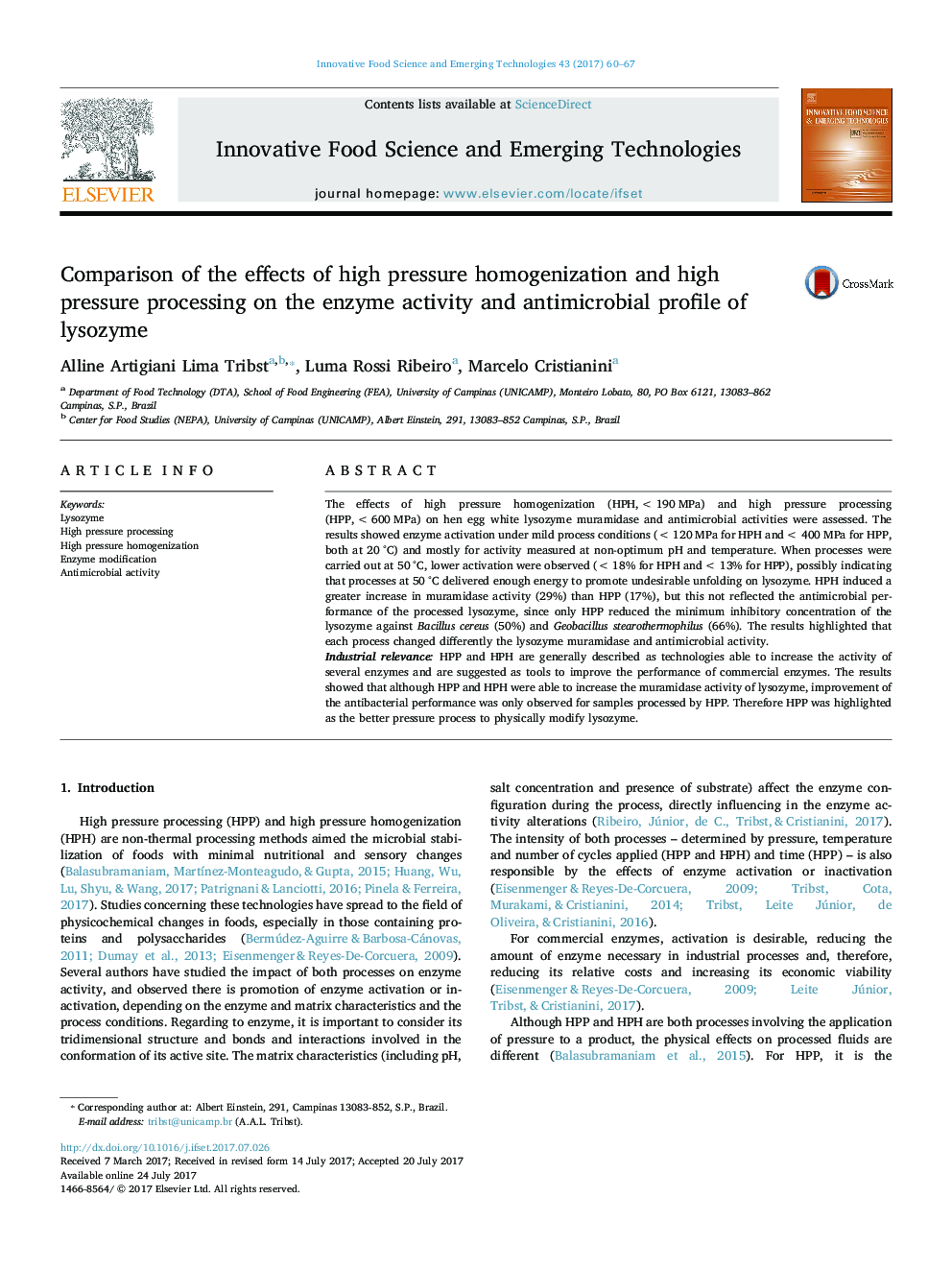| Article ID | Journal | Published Year | Pages | File Type |
|---|---|---|---|---|
| 5521688 | Innovative Food Science & Emerging Technologies | 2017 | 8 Pages |
â¢Increase of enzyme activity occurred after HPH (up to 29%) and HPP (up to 17%).â¢Lysozyme activation mainly occurred at non-optimum pH and temperatures.â¢Only HPP induced increase of lysozyme antimicrobial activity (up to 66%).â¢No microbial growth delay occurred at sub-inhibitory concentration of lysozyme.
The effects of high pressure homogenization (HPH, < 190 MPa) and high pressure processing (HPP, < 600 MPa) on hen egg white lysozyme muramidase and antimicrobial activities were assessed. The results showed enzyme activation under mild process conditions (< 120 MPa for HPH and < 400 MPa for HPP, both at 20 °C) and mostly for activity measured at non-optimum pH and temperature. When processes were carried out at 50 °C, lower activation were observed (< 18% for HPH and < 13% for HPP), possibly indicating that processes at 50 °C delivered enough energy to promote undesirable unfolding on lysozyme. HPH induced a greater increase in muramidase activity (29%) than HPP (17%), but this not reflected the antimicrobial performance of the processed lysozyme, since only HPP reduced the minimum inhibitory concentration of the lysozyme against Bacillus cereus (50%) and Geobacillus stearothermophilus (66%). The results highlighted that each process changed differently the lysozyme muramidase and antimicrobial activity.Industrial relevanceHPP and HPH are generally described as technologies able to increase the activity of several enzymes and are suggested as tools to improve the performance of commercial enzymes. The results showed that although HPP and HPH were able to increase the muramidase activity of lysozyme, improvement of the antibacterial performance was only observed for samples processed by HPP. Therefore HPP was highlighted as the better pressure process to physically modify lysozyme.
